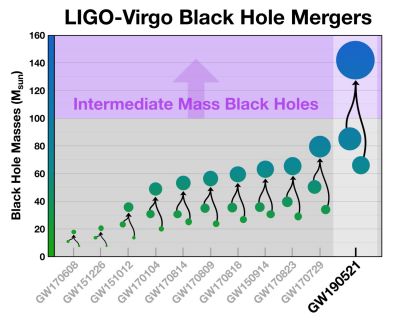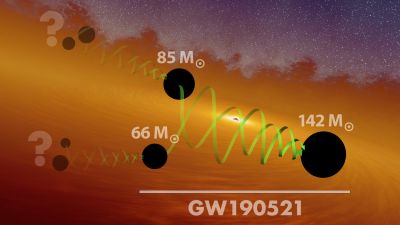Black holes are still the most intriguing space objects for scientists. So, when they find two black holes colliding, it becomes a sight to behold. While witnessing one is impossible, they have developed techniques to understand how it happened. Recently, scientists witnessed such a phenomenon that they found "mind-boggling".
The collision they detected was not only the most distant but also the most powerful and most baffling yet. One of the colliding black holes had a mass that is equivalent to 85 times larger than that of Sun while the other one was roughly 66 solar mass. As the two black holes merged into one, it was estimated to weigh about 150 solar mass, something scientists never detected before.
Impossible Phenomenon
The phenomenon was first detected on May 21, 2019, by scientists from an international collaboration using the gravitational wave detector. The international alliance includes Australian National University (ANU), Laser Interferometer Gravitational-Wave Observatory (LIGO) in the U.S. and Virgo observatory in Italy.

But the event was considered impossible since the larger black hole fell under the forbidden category due to its gigantic size. Star that weighs 65 to 130 times more than the Sun becomes so hot in the center that it converts photons into particles and antiparticles. The process is called 'pair-instability' and that leads to the fusion of its oxygen nuclei, blowing the star part or creating a supernova.
But in this case, the star didn't collapse on its own weight. Hence, this was the first time, scientists were able to observe something that was previously thought impossible.
Professor Susan Scott from the ANU Research School of Physics says black holes are like vacuum cleaners of the universe that suck everything in their path and get bigger. The "impossible" super black hole might have been created the same way about seven billion years ago.
The merger also released a massive amount of energy — around eight times of solar mass — that was caught in the gravitational wave detector and was named GW190521 as per the date. "This doesn't look much like a chirp, which is what we typically detect. This is more like something that goes 'bang,' and it is the most massive signal LIGO and Virgo have seen," said Nelson Christensen, a researcher from the French National Centre for Scientific Research (CNRS).



More Questions Than Answer
The discovery puzzled the scientists as it has challenged conventional scientific thought. Until now, scientists observed two types of black holes — supermassive ones that reside at the center of a galaxy and the smaller ones are scattered throughout the universe. But the latest discovery falls under the intermediate category that is not supermassive and neither small.
"The fact that we're seeing a black hole in this mass gap will make a lot of astrophysicists scratch their heads and try to figure out how these black holes were made," Christensen said.
Researchers are although considering the possibility of a hierarchical merger. In this, the black holes might have been formed merging with other black holes to get bigger and eventually colliding together. "This event opens more questions than it provides answers," said LIGO member Alan Weinstein, professor of physics at Caltech. But for him, it's an exciting thing as well.









